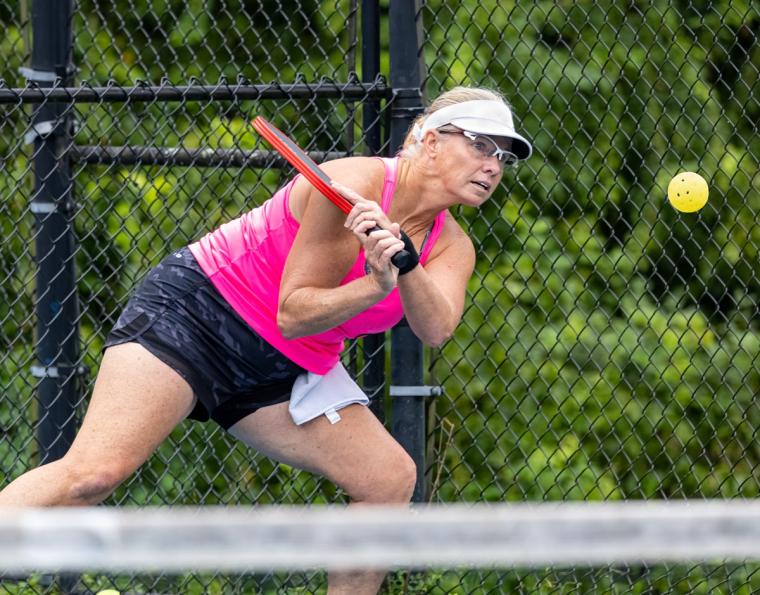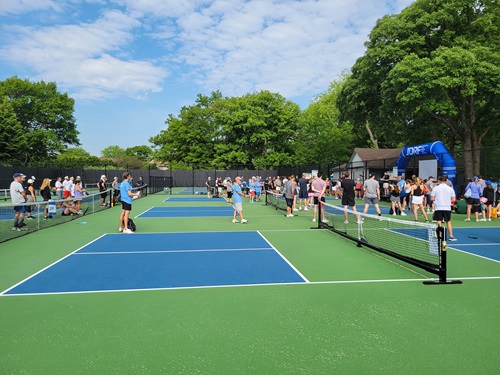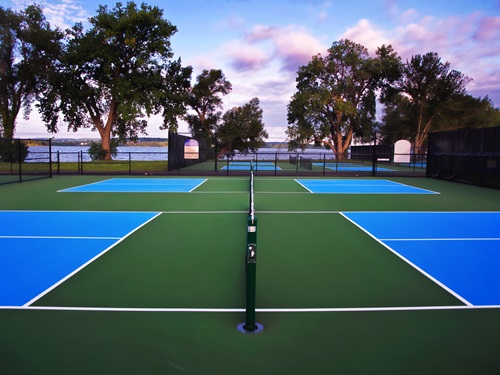
Honestly, it was only a matter of time.
Pickleball is trending, player numbers are expanding, competitive events are proliferating and with all this growth comes the need to keep events (and players) consistent in terms of player skill levels. Right now, that duty is being divided between two organizations, the UTPR (USA Pickleball Tournament Player Ratings) and the DUPR (Dynamic Universal Pickleball Ratings).
Except there’s a problem: There is uncertainty among event owners (and players) as to the ratings body with which they should align themselves in order to have the most accurate and trustworthy results.
 How should a ratings system work? Here is a quick overview of one in a separate sport.
How should a ratings system work? Here is a quick overview of one in a separate sport.
The Universal Tennis Rating System (UTR) is used to determine where tennis players worldwide stand in comparison to one another. The UTR is dynamic, meaning it fluctuates constantly, measuring each instance of play, feeding it into an algorithm and determining what skill level a player should have.
If, for example, a player classifies himself or herself as a 2.0 (or beginning) athlete, and then consistently wins at that level, the UTR system eventually bumps that player up to the higher 2.5 level (and to competitions at that level), which ascertains the player does not continue to dominate play in a level he or she has already outgrown.
Other sports have their own ratings systems. In all cases, the sophistication of the ratings system is determined by the amount of funding available to support the complexity (and reliability) of a database. A less monied sport might not have something with all the bells and whistles of the dynamic UTR, and as a result, might allow better players to get away with sandbagging (a colloquial term for the practice of putting oneself into a lower-skill category in order to guarantee a win). Some sports, particularly those just emerging, might rely on players self-rating (more on that in a minute).
Right now, pickleball is in the crosshairs. The sport has achieved unprecedented growth, and with that, it has an ever increasing number of competitive events, which has led to the rise of the UTPR and the DUPR. Both ratings are dynamic, taking into consideration recent player activity – but there are some differences. According to Pickleball Union, which produced the following chart, the specifics are as follows:
|
Feature |
DUPR (Dynamic Universal Pickleball Rating) |
UTPR (USA Pickleball Tournament Player Ratings) |
|
Goal |
A universal rating system for all pickleball players globally. |
Specifically for players participating in USA Pickleball-sanctioned tournaments. |
|
Rating Scale |
Typically ranges from 2.00 (beginners) to 8.00+ (top professionals). |
Usually ranges from around 1.0 (beginners) to 6.0+ (top professionals). |
|
Type of Play Rated |
Includes league play, tournament play, and recreational play. |
Primarily focused on tournament play. |
|
Match Types |
Rates both singles and doubles play. |
Rates singles, doubles and mixed doubles play separately. |
|
Calculation |
Based on an algorithm considering match results against other rated players. |
Based on performance in sanctioned tournaments. |
|
Rating |
Rating is dynamic, updating regularly with ongoing play. |
Rating is updated periodically, reflecting tournament performance. |
|
Accessibility |
Accessible via DUPR’s website or app. |
Accessible through USA Pickleball’s membership portal or tournament platforms. |
|
Global vs Local |
Global reach, not limited to a specific country. |
Primarily national, focused on the United States. |
|
Who is it For? |
Ideal for players seeking a universal and continuously updated rating. |
Suitable for players focusing on competitive tournament play in the USA. |
Which system is more popular? It depends on how you look at it. DUPR has made some high-profile announcements recently. PR NewsWire notes that David Kass, real estate developer and Major League Pickleball team owner, will operate as the new owner and chairman, alongside a number of new board members and investors that include tennis luminary Andre Agassi.
Dink It Over adds that the younger generation is also being engaged by DUPR, with college and junior leagues being activated. Oh, and LUCRA, a gamification service, also aligned itself with DUPR.
But those wishing to host events sanctioned by USA Pickleball will need to move to the other side of the room. The Carvana PPR Tour notes, “If you want a sanctioned and official rating, the UPTR is considered the standard in pickleball ratings. It is used by USA Pickleball for sanctioned tournaments.”
In fact, UPTR was created by USA Pickleball and ratings are calculated by play at USA Pickleball-sanctioned tournaments. (Caveat: UPTR ratings are only available to those who have USA Pickleball membership.)
And make no mistake, there’s a lot of back-and-forth in the article linked above:
“Games with your friends at your local park or community courts, considered “recreational matches,” do not figure into your UTPR rating. Your rating is also not affected by tournaments that use pickleballtournaments.com software to run their events.
The UTPR rating is way more accurate than self-rating and that’s valuable for beginners who want to get involved in tournaments. However, one of the downsides to the UTPR rating is that the scores of the matches used to calculate the final number are not considered. Only the win or the loss factors in and that can ultimately lead to not being the most accurate metric.
In addition to self-rating and UTPR, DUPR is another criterion for rating purposes. DUPR was developed in 2021 by Steve Kuhn, who also is the founder of Major League Pickleball. DUPR is used by every PPA player on tour and is available for all amateurs too. The app is a free download to your phone.
DUPR’s aim is to get a more accurate rating system for all players. It figures your rating based on results, regardless of event, location, tournament or whatever. And the best thing about DUPR’s rating system is the fact it continually updates. It factors in not only if you won, but how many points were scored. It figures in if the game was a tournament, a league match, or just a practice/recreational game with friends.
DUPR is certainly more accurate than a self-rating and is more consistent than the UTPR. All a player has to do is find a match, get everyone on the court to agree that it will be recorded, play away and then enter the results when the match is completed. DUPR matches during practice games can add a level of intensity that is sometimes hard to replicate outside of tournament play.”
For its part, USA Pickleball has a FAQ section on its website, relating to UTPR. One of the questions is whether the system is perfect (not really, says USA Pickleball).
But DUPR and UTPR are not the only metrics.
PickleballMax notes, “In November 2022, it was announced that the APP Tour would partner with [previously mentioned tennis system] UTR. Many consider UTR to be the gold standard for tennis and the best rating system available. It’ll be super interesting to see how effective UTR will be in adding pickleball to its menu. This will surely give UPTR and DUPR some high-level competition.”
 A full description is available on the UTR's website here. Beginner players without match results receive a provisional rating (P1 to P5) based on their answers to a series of online questions. After the results of matches, however, this converts to decimal rating on a scale of 1-10.0. The ranking system is known as UTR-P.
A full description is available on the UTR's website here. Beginner players without match results receive a provisional rating (P1 to P5) based on their answers to a series of online questions. After the results of matches, however, this converts to decimal rating on a scale of 1-10.0. The ranking system is known as UTR-P.
Additionally, private organizations that sponsor drop-in play, rec leagues or unsanctioned tournaments (these might include park and rec facilities, health clubs, YMCAs and local community centers), often allow players to self-rate according to skill level since most of those players do not have an official rating and are unlikely to play competitively. In this case, their play setup is similar to that of club leagues in sports like racquetball; the latter sport allows players to self-rate in categories graded from A through D.
Note the systems mentioned above do not rank players overall; a listing of the organizations that do that can be found here.
Bottom line: The sport of pickleball will continue to evolve. The sophistication of its ratings will continue to evolve, and the number of players at all levels will continue to grow. It will behoove event owners to stay on top of the latest developments, and to make it clear which player ratings system is being used when creating registration materials.

